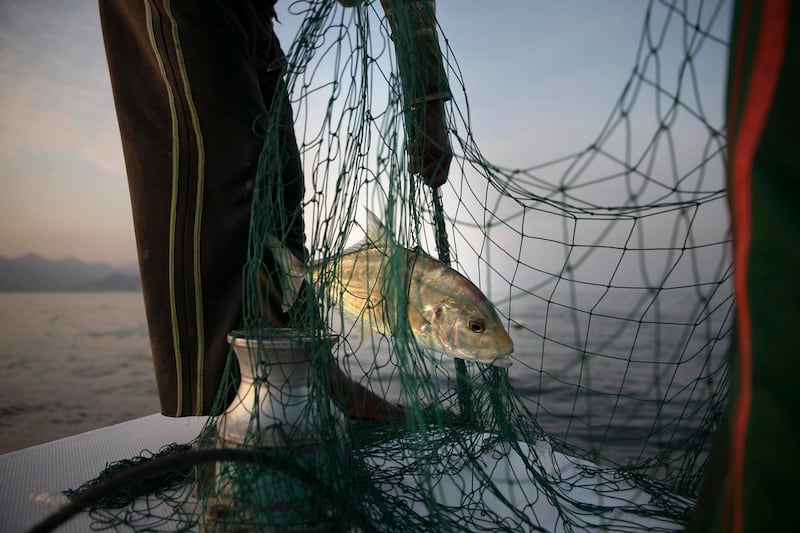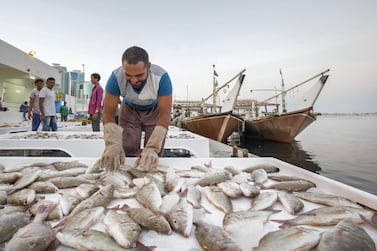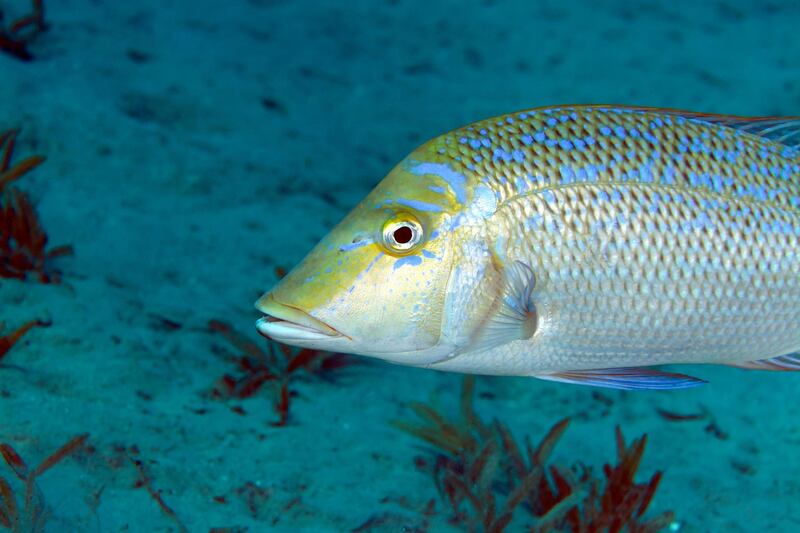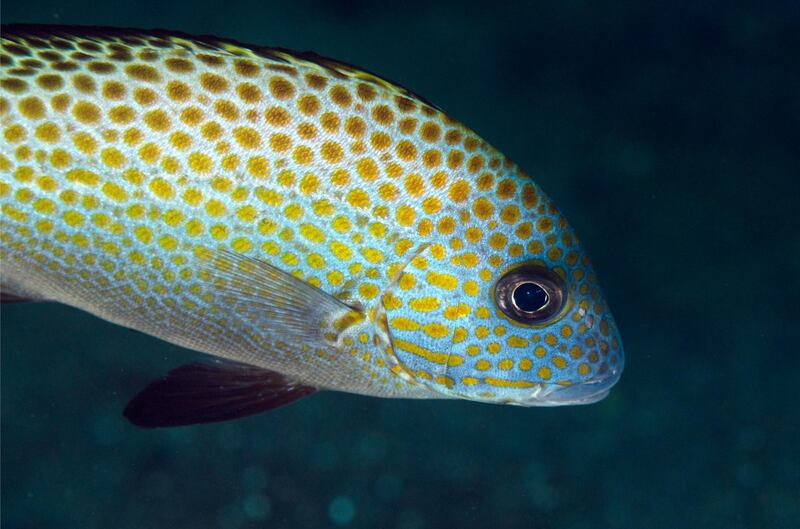Key fish species in the Arabian Gulf, including local favourites like the hammour and sheri, are “severely overexploited” raising serious concerns over their long-term survival.
The Fisheries Resources Assessment Survey, an expansive study by the Environment Agency — Abu Dhabi (EAD), revealed that more than 85 per cent of the sheri (rabbit fish) and hammour (grouper) populations have been wiped out.
The study described the results as a conservation emergency that could result in the species' extinction from the waters of the Arabian Gulf forever. Farsh (painted sweetlips), another popular food fish, has been reduced to seven per cent of its adult stock size.
The study, which collected data from 250 days at sea and more than 2,500 survey stations, comes a month after the Minister of Climate Change and Environment, Dr Thani Al Zeyoudi, met fishermen in Umm Al Quwain and asked them to stop using methods that deplete fish stocks and harm marine life.
He said such practices were giving the country a poor image around the world.
It showed that overzealous fishing practices have wiped out certain fish specimen and placed populations at risk of collapse. It showed alarming drops in fish populations of some 200 species due to overfishing. And hammour, sheri and farsh are being fished between three and five times the sustainable limits.
Despite having a life expectancy of 20 years, the average hammour identified in the study was eight years old and the average farsh was just two years old, 28 years short of its average lifespan.
“The results of our surveys are very concerning. They confirm that we all need to be part of the recovery plan for the long-term survival of fisheries,” said Dr Shaikha Al Dhaheri, acting secretary-general of EAD.
Last year, a study from the University of British Columbia found that a third of marine species could become extinct in the Arabian Gulf by 2090 because of rising water temperature, changing salinity and oxygen levels, and human activities such as overfishing.
A recent study published in Biological Conservation revealed that 8 per cent of marine bony fish in the Arabian Gulf are threatened, double that of the world average.
Overfishing is disturbing the life cycle of several fish populations and risking imbalance in the local marine ecosystem. The biggest fish are the most desirable in markets but they are also the most capable of reproducing and bolstering species populations.
“It is clear that it is time for the sea to recover and we have proposed several urgent and stricter measures which we will be working with our partners and the wider community,” Dr Al Dhaheri said.
Several attempts have been made to educate local fishermen on the dangers of overfishing but the EAD, along with other conservation organisations, struggle to monitor their activities.
A fishing ban on sheri and safi is imposed across the UAE during the breeding season – between March 1 and April 30 – in a bid to preserve stocks. During that period, local municipalities carry out inspections at fish markets to ensure the ban is enforced.
Similarly a ban on certain types of nets is also in place, though this too is difficult to monitor. Last year, a snap inspection by officials in Abu Dhabi revealed that seven out of 10 nets used by local fishermen were illegal.
The Ministry of Climate Change and Environment are conducting a socioeconomic study on UAE fishermen to assess traditional views on the industry and gauge local understanding of ecological concerns. Three hundred boat owners and crew have been part of the study.
"In the immediate term we will urgently work with the commercial, recreational and spearfishing community on recovery plans that reflect the state of our fishery. We will follow up on our proposals to implement regulations such as stricter control on illegal fishing practices and ensuring fishermen continue to fish responsibly,” said Dr Al Dhaheri.
"As part of EAD’s recovery plan to address the findings of the survey further, it will commence engagement with commercial and recreational fishers on implementing strict management measures that will support the fisheries recovery.”
The UAE aims to replenish its fisheries to 30 per cent stock by 2030 – an amount regarded as sustainable by the Food and Agriculture Organisation of the United Nations.
Figures released by the ministry in 2015 showed that stocks were estimated at 9,100 kg per square kilometre in 1975. Overexploitation and man-made habitat destruction reduced that figure to 528kg per sq km in 2011.
The decline is most evident in the country's most desired fish – the hammour, sheri and farsh.
New laws will help reduce the amount of pressure placed on the now-vulnerable species, with fishing bans in place and more possibly on the way.









